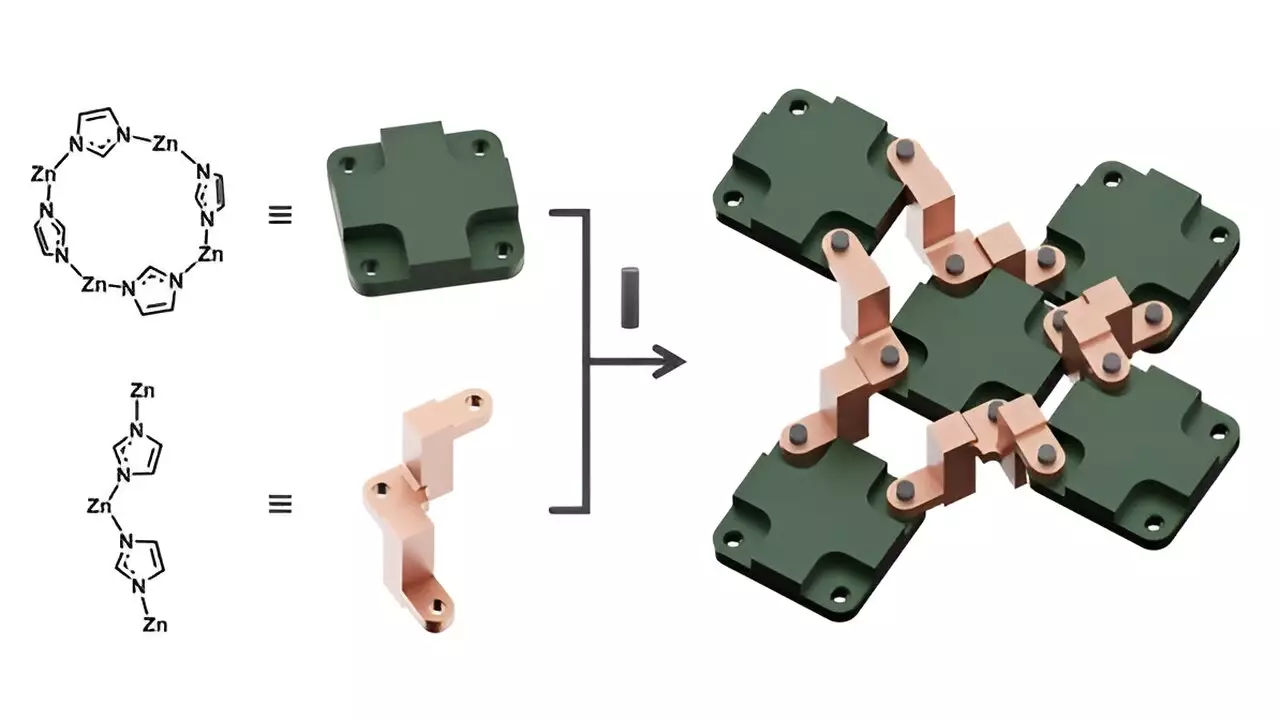The field of nanotechnology is on the cusp of a significant breakthrough, as machines designed at the molecular level begin to transcend their previously limited functionalities. The groundbreaking research from the Ulsan National Institute of Science and Technology (UNIST) in South Korea has catalyzed excitement among scientists, introducing revolutionary advancements with the potential to reshape data storage technologies and other applications. Led by Professor Wonyoung Choe, this innovative work not only elevates the understanding of solid-state molecular structures but also underscores the inherent complexity and brilliance of machinery operating at an almost imperceptible scale.
A Leap in Nanoscale Mechanics
At the heart of this research are zeolitic imidazolate frameworks (ZIFs), which serve as the blueprints for molecular machines. The ability of these ZIFs to mimic complex mechanical movements marks a turning point for nanotechnology. Unlike traditional metal-organic frameworks (MOFs) that have historically lacked machine-like behaviors, these newly developed structures demonstrate remarkable mechanical properties and mechanisms. The breakthrough stems from the integration of dynamic components, which act as mechanical levers within solid-state frameworks, thereby allowing precise regulation of movements on the nanoscale. As these molecular machines engage in controlled motions, they offer exciting implications for the realms of data storage and material science.
The Intricacies of Mechanical Relationships
What sets this research apart is its emphasis on the mechanical linkage structure within the ZIFs, specifically the employment of a slider-crank linkage mechanism. By leveraging this ingenious design, the researchers achieved an extraordinary capability: the conversion of rotational movements into linear propulsion, which responds adaptively to changes in temperature and solvent interactions. This responsiveness not only exemplifies the intricate dance of molecular mechanics but also demonstrates how fine-tuning the structural components of ZIFs can lead to revolutionary creations. This newfound adaptability enhances their application prospects and may serve as a cornerstone for innovations in nanomaterials that possess a range of functional utility.
Implications for Data Storage and Beyond
The implications of this research stretch far beyond academic curiosity. As systems for data storage become increasingly complex and data-intensive, the need for innovative materials that can facilitate efficient data management and processing grows imperative. The high elasticity and flexibility exhibited by the developed ZIFs suggest they could be crucial components in advanced data storage systems. This flexibility enables them to manage varied mechanical demands, making them not just passive retainers of information but active participants in the data management process. The interplay between mechanical properties and information technology presents opportunities for crafting smarter, more responsive data storage solutions.
A Call to Innovate in Nanotechnology
Professor Choe’s assertion that implementing machine-like movements at the molecular scale is essential for uncovering new materials with unique mechanics resonates profoundly within the scientific community. As scientists continue to explore and expand upon the principles established by this research, the prospects for emerging technologies become increasingly promising. Fostering an ecosystem of collaboration and innovation in nanotechnology could well prove to be the key to unlocking new frontiers in material science, exemplifying mankind’s ceaseless quest for advancement through the marvels of the microscopic world. As these discoveries unravel, they invite a reimagining of what is possible—a redefinition of the boundaries between mechanics, materials, and technology that could ripple across industries and everyday life.


Leave a Reply